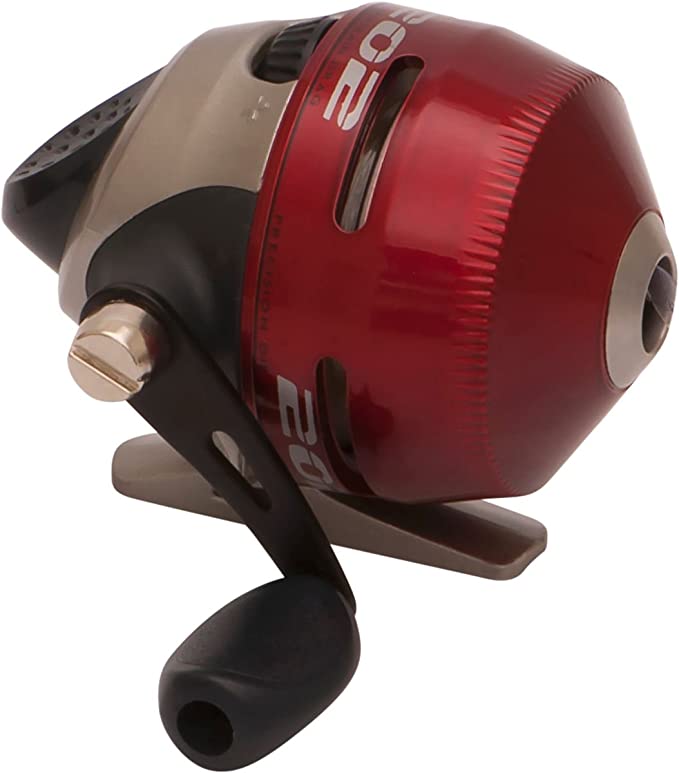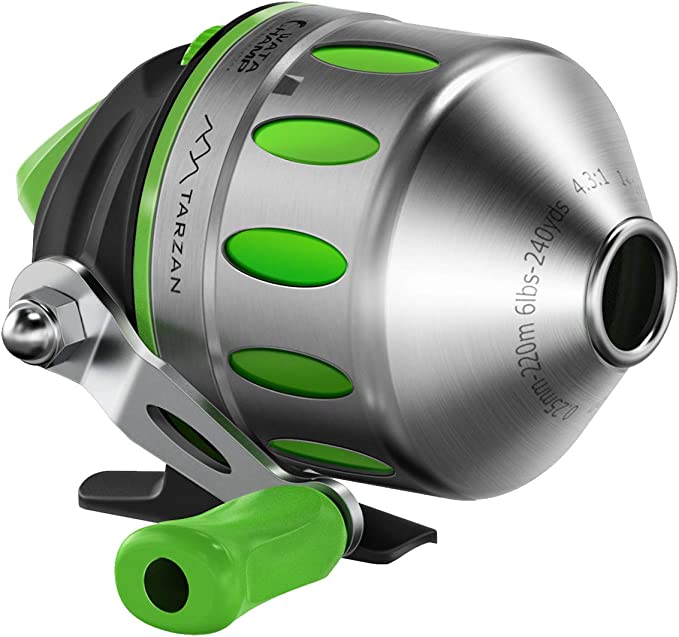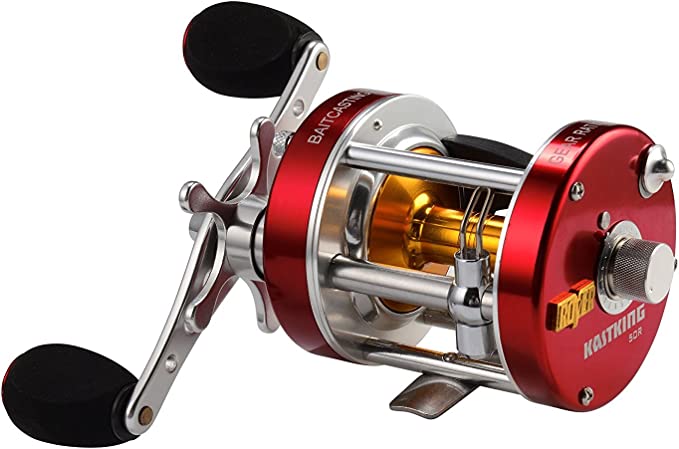Mastering the Depths: The Science Behind Cannon Magnum Electric Downriggers
Update on Sept. 15, 2025, 3:44 p.m.
Drop a simple steel wrench overboard. For a moment, it glints in the sun, a familiar man-made object against the vast blue canvas. Then it’s gone, tumbling into an alien world. Down it sinks, past the sunlit zone teeming with life, into the growing twilight. The pressure builds relentlessly, squeezing it with the weight of an entire atmosphere for every 33 feet of descent. The water, once a neutral medium, becomes a chemical aggressor, its salt content eager to reclaim the wrench’s refined metals and return them to a state of oxidized dust.
Down here, the rules are different. This is not our world. To operate here, to explore, to fish, to simply exist, is to wage a constant, invisible war against the fundamental forces of physics and chemistry. This isn’t a story about a single gadget; it’s the story of that war, revealed through the ingenious engineering of a device built to survive it.

The Tyranny of Pressure and the Dark
The first enemy is the most straightforward: pressure. Imagine the weight of a car pressing down on every square foot of an object. Now imagine hundreds of them. This is the reality of the deep sea. The immense hydrostatic pressure doesn’t just threaten to crush hulls; it fundamentally changes how materials behave. It seeks out microscopic weaknesses, turning them into catastrophic failures.
Alongside this crushing force is the profound absence of light. Below the “photic zone”—roughly the top 650 feet (200 meters) where sunlight can penetrate—lies a world of perpetual darkness. Here, human sight is useless. You cannot visually guide a lure to a specific ledge or navigate around an unseen obstacle. Control must be absolute, precise, and entirely remote.
This is the foundational challenge that led to the creation of the downrigger, a device that acts as a remote, precision elevator for the deep. At its heart, it’s a simple concept: a heavy weight, or “cannonball,” takes a fishing line down to a specific depth. But to execute this simple concept in such a hostile environment requires robust engineering. It demands a motor with enough torque to lift a heavy weight against gravity and water resistance, and a cable strong enough to withstand the strain without failing. It’s the first step in extending human control into a realm we cannot physically inhabit.

The Silent Dissolution: A Battle Against Rust
If pressure is the brute force of the deep, then corrosion is its silent, patient assassin. Metal objects in the ocean don’t simply rust; they are actively and relentlessly consumed. The reason is that saltwater is a highly effective electrolyte—a liquid that conducts electricity. This simple fact turns the entire ocean into a giant, low-power battery, and any boat floating in it becomes a collection of active electrodes.
This phenomenon is known as galvanic corrosion. It occurs whenever two different metals are placed in an electrolyte. A tiny electrical current flows between them, causing the less noble metal (the anode) to corrode at a vastly accelerated rate, effectively sacrificing itself to protect the more noble metal (the cathode). A typical boat is a chaotic mix of metals: an aluminum hull, a bronze propeller, stainless steel fittings. The result is a complex, invisible web of destructive electrical currents.
This is where true marine engineering distinguishes itself. When designing a piece of equipment to survive this environment, simply choosing “stainless steel” is not enough. Consider the telescopic boom on a high-end downrigger like Cannon’s Magnum series. It extends from 24 to 53 inches, providing the leverage needed to keep a heavy cable away from the boat’s propeller. But its real genius lies in its specific composition: 316 marine-grade stainless steel.
What makes “316” so special? A single, crucial ingredient: molybdenum. While standard stainless steel resists general rusting, it is vulnerable to a particularly insidious form of decay in saltwater called pitting corrosion. Chloride ions in salt attack the steel’s protective passive layer, creating tiny, invisible pits that can quickly burrow deep into the metal, compromising its structural integrity from the inside out. Molybdenum dramatically enhances the steel’s ability to resist this targeted attack. Choosing 316 steel isn’t a luxury; it’s a calculated move in the chemical war, deploying a specific alloy to counter a specific, deadly threat.

The Electrical Ghost: A Battle of Fields
The war gets stranger still. The same galvanic corrosion that eats away at metal creates another, more subtle problem: an electrical ghost. The web of tiny electrical currents flowing around a boat’s hull generates a weak but persistent negative electrical field in the surrounding water. To us, this field is imperceptible. But to many marine creatures, it might as well be a blaring alarm.
Here, we must venture into the realm of biology. Many fish, particularly sharks and salmon, possess a remarkable sixth sense known as electroreception. Through specialized organs like the Ampullae of Lorenzini, they can detect minute changes in electrical fields. It’s how they navigate using the Earth’s magnetic field and locate prey hidden in the sand by sensing the faint electrical signals from their muscle contractions.
To these sensitive creatures, the negative field of a boat hull might be an unnatural, repulsive presence. This led engineers to a fascinating and controversial idea: what if you could fight an electrical field with another electrical field?
This is the theory behind a technology called Positive Ion Control (PIC). The system works by sending a controlled, positive DC voltage down the downrigger’s steel cable. The goal is to create a positive electrical field around the cable and lure that is strong enough to neutralize the boat’s negative field. In theory, this cloaks the unnatural signature of the vessel and creates a more attractive, or at least neutral, environment that won’t spook the fish. It’s a bold piece of electrochemical engineering—an attempt to manipulate the very sensory world of the target.
The Need for Speed: A Battle Against Time
Finally, every operation in the deep is a battle against time. The ocean is vast, conditions can change in an instant, and every moment spent rigging or re-checking gear is a moment not spent exploring. Efficiency is not just a convenience; it is a core principle of success.
This is where the physics of fluid dynamics comes into play. Retrieving a 15- or 20-pound weight from a depth of hundreds of feet is not as simple as pulling it up. Water is a thick, viscous medium. As the speed of retrieval increases, the hydrodynamic drag—the resistance of the water—increases exponentially. To pull that weight up at a rate of 250 feet per minute requires a powerful motor capable of overcoming both the weight itself and the immense, clinging force of the water.
This speed isn’t a vanity metric. It’s the engineering solution to several critical problems. It allows an angler to quickly check their bait, change lures, or, most importantly, clear the heavy weight and cable out of the way the instant a fish is on the line, preventing catastrophic tangles. Furthermore, automating this process with features like an “Auto-Up” function, which stops the weight at the waterline, removes the potential for human error in a high-stakes moment. It’s another layer of control, another victory in the war for efficiency.

Engineering as an Extension of a Sense
When we look at a piece of advanced marine technology, it’s easy to see only the steel, the motor, and the wire. But to do so is to miss the true story. We are not just looking at a machine. We are looking at a suite of elegant solutions to a series of hostile environmental problems.
The robust frame is a defense against the crushing tyranny of pressure. The specific alloy of its steel boom is a shield in the silent, chemical war of corrosion. Its electrical system is a ghost-hunter, designed to manipulate invisible fields in a world perceived by senses we can only imagine. And its speed is a weapon in the relentless battle against time and the physics of drag.
Technology like this is more than just a tool. It is a proxy, an extension of our senses and our will into a world we were not built to survive. It allows us to fight the invisible war on the ocean’s terms, turning one of Earth’s most challenging environments into a place of profound discovery.

























